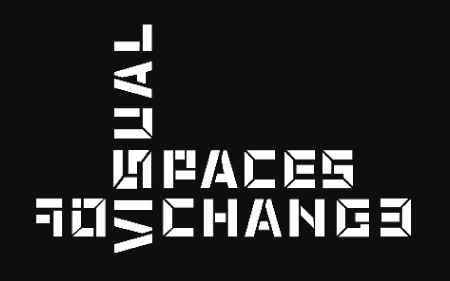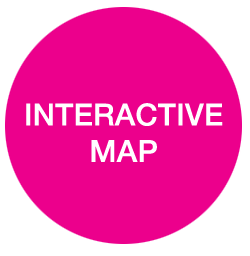Antoine Laurent Lavoisier (1743-1794) postulated in his famous law of conservation of mass "in nature nothing is lost, nothing is created, everything is transformed". We understand that in architecture everything is also transformed, but with creation and loss. Maybe if we look at Lavoisier's strict formulation "in a chemical reaction performed in a closed vessel, the sum of the reactants masses is equal to the sum of the products masses" we'll find, right there, the main reason for this so significant difference. Architecture, our buildings and cities, do not exist in a closed system, they are in fact, open works. Open to our life, with its changes, attentions and inattentions, desires and fears.
In fact, architecture and cities are complex and fascinating systems that can be studied and understood through different prisms and different research tools. Many and diverse authors could be mentioned, some more connected to the history and theory of the universe of architecture, others who connect this theory to practice, others who are closer to the so-called hard sciences and others on the contrary to the humanities that as we know integrate different disciplines of philosophy, art and sociology.1 It's not our goal to argue that Architecture is an art in opposition to a science, but to refer that architecture is never just one of these worlds and that there is a natural contamination between architecture and art, something that is explained by several authors2 and corroborated by our Pritzker's architects, namely Álvaro Siza and Eduardo Souto de Moura.3 We believe that the universe of Architecture should be understood in a comprehensive way as a practice and discipline able to integrate the socio-economic, political, historical, artistic and technical domains.
In this context, we are particularly interested in exploring certain architectures through the universe of image, namely photography and drawing. The intention is to create a documentary and artistic project based on the study and visits to interesting buildings from the architectural point of view, and that for various reasons are forgotten, abandoned or waiting to be placed on the real estate market.
They may be more or less known and previously registered and/or documented buildings, or not, but they will always be buildings that are supposed to have some architectural interest. They may be forgotten or abandoned, but they may also be the object of a real estate transaction, which sometimes always implies changes in the building: eviction, reoccupation, accompanied by greater or lesser changes of use and form.
These transformations, of use and form, are characteristic of cities as open systems in constant change, and can be of very diverse degrees and intensities. In fact, projects on these abandoned and / or expectant architectures will always be an opportunity to look at these places or non-places as spaces of entropy, spaces that are in-between. In between their recovery or demolition, this entropy can be made visible as, for example, happens in Maros Krivy's works about city space and architecture,4 where photography is significantly present. For Krivy, Entropy can be considered as the observation of a state of increasing complexity of a given system. In this way, looking at certain architectures that are threatened with radical transformation or are simply abandoned, Krivy explores these in-between spaces, making this entropy visible.
Until their eventual demolition, these buildings can be visited and studied with the aim of developing documentary and artistic work, with these architectures between owners in an expectant moment of what will come next. Our projects do not aim to freeze the time to come and their primary goal is to explore the transformation of the buildings and understand their architecture, taking advantage of the potential of a contemporary documentary record and eventually records of its past and thus have access (albeit virtually) to several lives of the same building and thus open the possibility for a work of rephotography, a strategy with great potential and already explored by several authors.5 However, the project will not have to follow this path, that is, we will not have to record the several lives, but a critical moment in the life of the building, emphasizing: the understanding of architecture as a discipline of the transformation of space; and the understanding of architectural space as a repository and simultaneous expression of diverse times.
"The horse in motion" (1878), Eadweard Muybridge's photographic record of seminal importance in the history and development of photography, aimed at immediately answering the question "When a horse trots or gallops, at some point does it have its four legs in the air?" The exercise carried out by Muybridge, avocated in an intense way the possibility of photography to reveal what was imperceptible to the human eye, exploring fugacity, through the suspension of time, as photographic matter par excellence.
Suspension of time is also an essential matter in architecture. Architecture responds to and expresses many different times, from the most immediate and daily to the longest and most perennial times and expectations. This dichotomy is expressed, for example, in the distinctions between "temple" and "hut" by Simon Unwin, or between "served" and "servant" spaces by Louis Kahn. The overwhelming majority of buildings, even the most utilitarian, have a temporal duration longer than that of human life, and the tension between the fleeting of each moment's circumstance and the desire for perenniality and consequent suspension of the passage of time, is a permanent value of architecture. Beyond the record, perhaps it is this shared temptation to suspend the passage of time and the acuity to the fugacity of life that sustains such a fruitful relationship between architecture and photography.
As Ignasi de Solà-Morales argues in Terrain Vague (1995),6 photographers show a special sensitivity to make us understand what in the territory is "imperceptible" or "invisible" in everyday life. In fact, contemporary photography is one of the arts that best succeeds in communicating a unique and analytical vision that simultaneously understands reality and interprets it, images capable of questioning the territory, showing the ways it is transformed and lived, its conflicts and heterogeneous architectures and materials. We are thus interested that these documentary and artistic photography projects explore the concept of "visual narrative" which is extremely important to communicate and to allow people to understand how spaces are perceived and how they can be experienced and transformed.
When we set the challenge to photograph these architectures in the fleetingness of change, most often profound and rapid, we do not set out with a question to be answered as Eadweard Muybridge did, but rather, with the expectation of the questions that may be raised by the photographic record. Perhaps more like not knowing who Doisneau's lovers or the "girl from Ipanema" are. Let the curiosity to know, to recognize, to reinterpret the "girls and boys" of our city's architecture from a fleeting moment in their lives remain.
Above all we want photographs that are not only signs of architecture, but also records that evoke the soul, or the genius loci of these architectural spaces, characteristics that can be observed in the work of reference photographers such as, for example, Luigi Ghirri on the work of Aldo Rossi7 or Guido Guidi on the architecture of Carlo Scarpa,8 as well as, in the present, in the images of Helène Binet on the works of Peter Zumthor or Zaha Hadid9 and Hans Danuser on the architecture of Peter Zumthor10 . Photographs that do not simply illustrate or reconstruct the spaces or buildings, but rather create a visual narrative capable of a poetic and critical reading of them. We want to offer new perspectives on these buildings, looking for details and views that can give relevance to features of the place that otherwise would not be recognized. We intend to go beyond the obvious, trying to communicate what is more subtle or complex, taking into account the richness of the various experiences of place of these architectures.
[1] From Bruno Zevi to Kenneth Frampton as authors more connected to the humanities in the field of history and theory, to Michael Batty and Bill Hellier, authors who make a significant bridge with the hard sciences, to a series of architects connected to practice, from Álvaro Siza, Eduardo Souto de Moura, Rem Koolhaas, Rafael Moneo and many others, the examples would be endless and only demonstrate the multidisciplinary richness and the diversity of ways of acting in the universe of architectural practice and discipline.
[2] Contamination and Purity in Early Modern Art and Architecture Visual and Material Culture, 1300-1700, Eds. Lauren Jacobi, Daniel Zolli; Krasny, E. (2008). The Force Is in the Mind: The Making of Architecture, Birkhäuser Basel.
[3] RAPOSO, Gabriela Maria Malheiro - O espaço como matéria comum entre a arquitetura e a arte contemporânea : contaminações entre as duas disciplinas. Coimbra : [s.n.], 2017. PhD thesis. Available at WWW: http://hdl.handle.net/10316/32537; Álvaro Siza et al, Conversation between Álvaro Siza, Eduardo Souto Moura, Nuno Grande and Gabriela Raposo: "Can we talk about contaminated space in your work?", audio and video, 7 March 2015.
[4] Maros Krivy: Krivý, M. (2009). Art and empty space: the case of Kaapelitehdas. Eckhardt, F.; Nyström, L.. Culture and the city (689-711). Berlin: Berliner Wissenschafts-Verlag; Krivý, M. (2009). Notes on architecture. Reconstruction: Studies in Contemporary Culture, 9 (2); Krivý, M. (2011) Political Economy of Landscape [portfolio]. Scopio Magazine 1.2-3, 48-61
[5] Crossing Borders, Shifting Boundaries: The Aura of the Image ISSN 2183-8976 [Print] 2183-9468 [Online] Volume 1, Issue 1 | Publication year: 2016 DOI 10.24840/2183-8976_2016-0001_0001(https://www.sophiajournal.net/sophia-1)
[6] Sola-Morales (1995), Terrain Vague, in Territories, Editorial Gustavo Gili, SA, Barcelona, 2002 Kraus, Rosalind, The originality of Avant-Garde and Other Modernist Myths, MIT Press 1985
[7] Alona Pardo and Elias redstone (Ed.) Constructing Worlds: Photography and Architecture in the Modern Age, Prestel, 2014, p. 153.
[8] Michael Jakob, "On the Poetics of Materials: The Photographic Gaze into the secrets of Matter" in Concrete: Photography and Architecture, Verlag Scheidegger and Spiess, 2017, p. 79.
[9] Hélène Binet, interviewed by Susana Ventura, "The Pure Sensation of Photography," Scopio International Photography Magazine 1 1/3, Oct. 2010.
[10] Lorenzo Rocha, "Building Architectural Images: on Photography and Modern Architecture" in Concrete: Photography and Architecture, Verlag Scheidegger and Spiess, 2017, p. 50.


 Ruins and Abandoned Spaces
Ruins and Abandoned Spaces